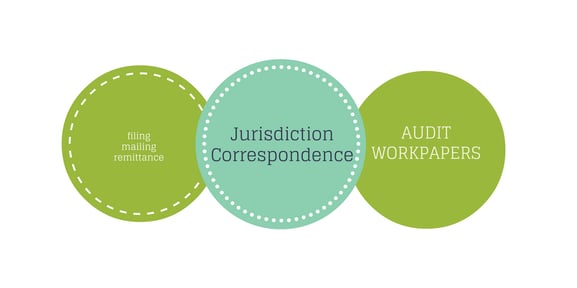I get the opportunity to talk to many businesses and CPA firms about our sales tax outsourcing services at TaxConnex. When most of the people we talk to refer to sales tax compliance, they are thinking about tax return preparation only. They never consider the other components of compliance.
This blog is going to highlight three of these ancillary components of sales tax compliance:

1. Filing, Mailing & Remittance
Once a sales tax return is prepared, it must get filed and paid. Filing can include mailing or electronic filing. If you mail a return, it must be signed, copied or imaged for future reference, stuffed in an enveloped, metered and delivered to the post office for certification of mailing. If you electronically file a return, it must be entered manually or uploaded into a unique jurisdiction web-site. Regardless of the filing method, a payment is generally required and can be a check, an ACH debit or an ACH credit. All of these remittance, mailing and filing activities require human action, processes, controls and related costs.
2. Jurisdiction Correspondence
Once a business is registered with a state and local jurisdiction, it can expect multiple pieces of recurring mail from each jurisdiction. This correspondence includes notifications of law and tax rate changes, blank tax forms, account changes and notices regarding previous filed tax returns. Though 90% or more of this correspondence is not relevant, there is a small percentage of this mail that requires action.
Many times, the action required is time critical so any delay in responding creates risk with the jurisdiction. Unfortunately, a person with some level of knowledge (as opposed to a technology), must review each article of mail as quickly as possible to separate the irrelevant from the time critical and to get the mail into the proper hands. This too requires human action, processes, controls and related costs.
3. Audit Workpapers
Once a tax return is filed, there must be some form of documentation to support the reported tax liabilities in case the tax return is audited in the future. Ideally, this documentation provides an easy trail from the core business transactions – for example, customer invoices or vendor invoices - to the lines on the tax returns. The documentation should also include proof of exemptions, if applicable, and support for bad debt write-offs and other adjustments. The cost of accumulating this information can be extensive if it is gathered after the original tax return preparers are gone and the data is stored in archives.
Just last week I ran into a situation where a company was using another firm to prepare paper based returns. The company then had to login to the e-file site to file and pay and/or cut checks and send the return and check to the jurisdiction. It’s not an efficient process to have multiple parties involved in the preparation, filing, and payment of the sales tax returns.
Be sure to factor in all of the relevant processes, costs, and risks when evaluating whether to outsource and to whom.








.png?width=1200&height=628&name=2023%20logo%20with%20SOC%20and%20clearly%20rated%20(2).png)